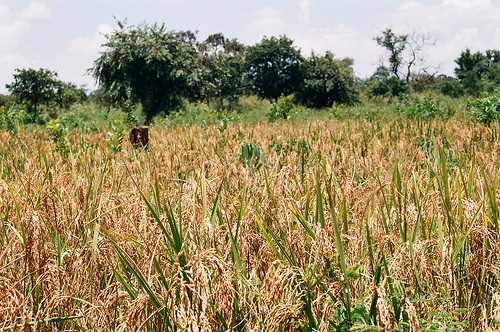
Rwanda, located in the heart of central Africa, has experienced remarkable progress in food security and nutrition in the last several years. According to a 2011 survey, between 2009 and 2011, levels of stunting among children dropped from 52 percent to 42 percent, wasting from 5 percent to 2.1 percent, and levels of underweight children from 16 percent to 13.8 percent.
However, despite these improvements, the Rwandan people still experience high rates of poverty and malnutrition—a situation further exacerbated by the more than 67,000 refugees who now reside within Rwanda’s borders. These refugees come primarily from neighboring Democratic Republic of Congo (DRC), fleeing the continuous conflict and violence plaguing the east. In April 2012, fighting in DRC intensified between M23 rebels and government forces, resulting in a new influx of refugees into Rwanda. As many as 25,000 new refugees are expected to arrive by the end of 2013, according to the U.N. World Food Program (WFP).
With no access to land for cultivation and limited livelihood opportunities, refugees depend entirely on humanitarian food assistance to meet their basic food needs. Extremely vulnerable groups must rely heavily on supplementary food to stave off malnutrition.
USAID and the WFP are working together on a program that feeds the large refugee population while supporting smallholder farmers within Rwanda. With cash support from USAID, WFP purchases cereals and pulses from Rwandan smallholder farmers for the refugee population. This program helps farmers increase their food production and living standards while feeding refugees in need of emergency assistance. Between December 2011 and December 2012, USAID and WFP fed more than 72,000 people in Rwanda, including 61,600 refugees.
Bernadette Furaha is one of the farmers from Kirehe district in the Eastern province of Rwanda whose maize was bought by WFP. “I was very poor, with no shelter and no support, " she said.
Furaha had a small plot of land and started cultivating it, but she had no access to a market and did not know how to manage post-harvest staple crops. With the support of USAID and WFP, she learned how to manage her produce after harvest, and as a result of her improved maize quality, she was able to sell it to WFP and to traders. Thanks to the support she received from WFP and USAID, she has constructed an iron-roofed house, bought a cow, and enrolled all of her children in school. She pays medical insurance for herself and her four children, and they have enough food at home for the family and extra income from selling crops on the market.
Agnes Ingabire Mutoni is a 31-year-old refugee with six children. “My youngest child, Joselyne Mushimire, suffered from malnutrition because we had travelled a long distance from Rutshuru in eastern DRC to Rwanda fleeing fighting in the area,” she said. “I arrived at Nkamira transit center and transferred to Kigeme camp, where I received a monthly food ration and super cereal [a fortified food] from WFP. My lovely child recovered from malnutrition after a few months of eating the nutritious food.”
These programs have also made providing aid more efficient. By purchasing the food locally, USAID and WFP are able to save considerable time and money. Because the food did not need to be shipped from overseas, the program saved more than $240 per metric ton on corn and $900 per metric ton on beans. Additionally, this food was distributed to refugees within two months of purchase, compared to an average of three to six months for food coming from the United States.
Out of a difficult situation, USAID and WFP were able to help refugees and farmers alike through one innovative and efficient program.







Comment
Make a general inquiry or suggest an improvement.